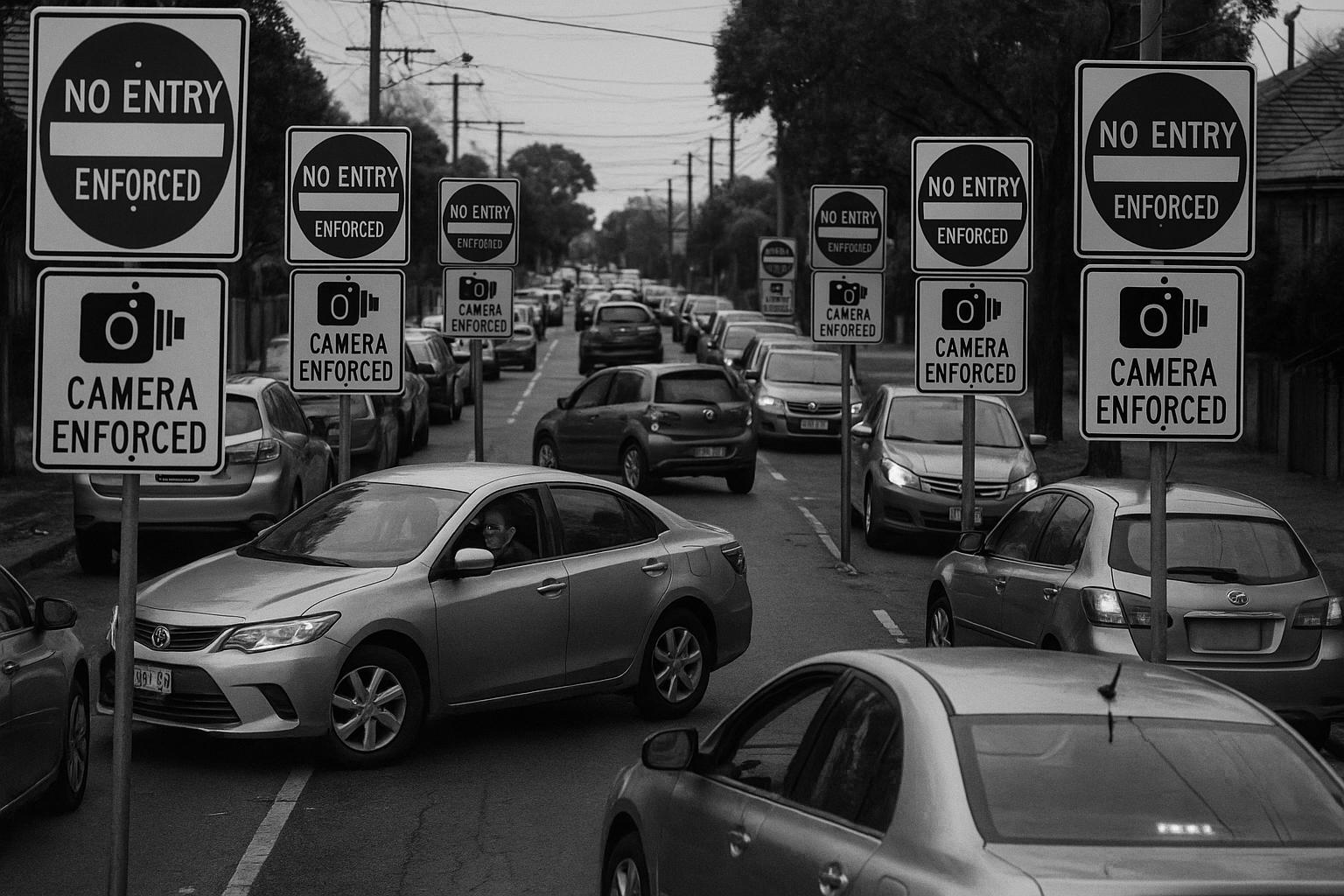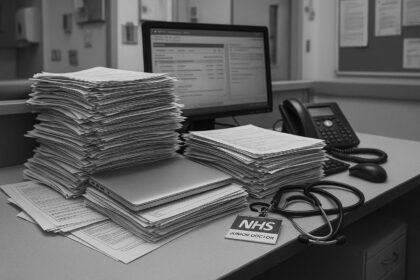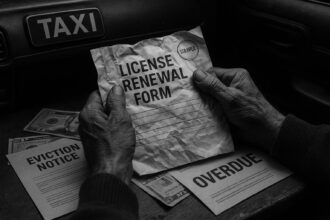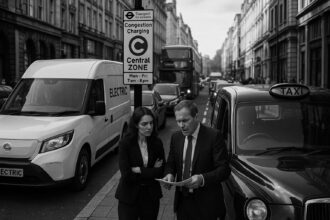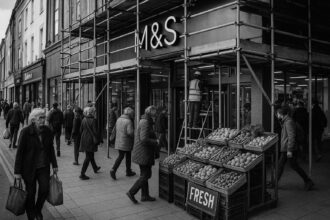The implementation of camera-enforced Low Traffic Neighbourhoods in East Greenwich has resulted in nearly £2.5 million in fines over five months, sparking strong opposition from residents facing longer commutes and disrupted routines, while critics question the scheme’s effectiveness and transparency.
The introduction of Low Traffic Neighbourhoods (LTNs) in East Greenwich has sparked significant controversy and frustration among local residents, with the scheme reportedly generating £16,500 per day in fines for the council. These camera-enforced LTNs, designed to reduce through traffic during peak hours on roads such as Westcombe Hill, Vanbrugh Hill, Halstow Road, and Maze Hill, have left many residents struggling with longer travel times and disrupted daily routines.
Footage captured by MailOnline reveals drivers making hurried U-turns, awkward diversions, and even panicked reversals to avoid fines of £100 for entering restricted roads during enforcement periods. Residents like Irene Asah, a mother of two, lament the impact on school runs and commutes. Once able to drop her son directly at school, she now has to park a distance away, resulting in her often being late due to the extended journey times. Similarly, Colin Gifford has noted how his quick route to the Blackwall Tunnel has been obstructed by the LTN, adding around 20 minutes to his commute and contributing to congestion on alternative routes.
Critics argue the LTNs have simply displaced traffic rather than reducing it. Kirsty Dunlop, another resident, described the scheme as “absolutely ridiculous” and “unhelpful,” highlighting that the traffic congestion has increased on boundary roads and that bus services are now often delayed or unable to navigate narrow streets. This disruption, coupled with unclear signage and perceived poor communication from the council, has exacerbated local resentment. One resident shared how their neighbour was fined just one minute before the restrictions officially began and was told the timing was irrelevant on appeal, illustrating a rigid enforcement approach that some find unfair.
The financial aspect of the scheme has come under scrutiny, with residents questioning where the substantial income from nearly 48,000 fines within five months—totaling around £2.5 million—is being allocated. Concerns include whether funds are genuinely invested in environmental or transport improvements or simply bolster council budgets without clear benefits. Marianne Chapman expressed suspicion, noting that the congestion has worsened on her street and that regular bus routes are impeded, making public transport options less reliable.
Supporters of the scheme, however, emphasise its environmental and safety benefits. Donald Reid stated that the LTN has reduced congestion and pollution, creating a more pleasant walking environment and encouraging shifts towards cycling and walking. He argues that behavioural change is essential to reach net-zero targets and reduce unnecessary car journeys, pointing out that the area previously suffered from heavy traffic and pollution.
The Royal Borough of Greenwich implemented the LTN trial in November 2024 as part of an 18-month neighbourhood management scheme aimed at reducing non-local traffic and improving air quality and road safety. It includes part-time camera-controlled restrictions during weekday peak hours, with exemptions for certain vehicles like blue badge holders and council services. Funded partly by the Department for Transport’s Active Travel Emergency Fund, the scheme complements larger projects such as Transport for London’s Cycleway 4 Extension along the A206.
Notwithstanding, some local politicians and groups are calling for a rethink. Councillor Matt Hartley, Leader of Greenwich Conservatives, criticised the council’s “ideological war on drivers,” highlighting poor signage, widespread confusion, and the displacement of traffic to already burdened boundary roads. He called for the council to listen to residents rather than focus on revenue generation. Similarly, the Coalition for Liveable, Equitable & Accessible Roads (CLEAR) has formed to oppose the LTN scheme, advocating for policies that better balance the needs of residents, businesses, and essential services.
The debate around LTNs in East Greenwich illustrates the challenges of balancing environmental goals with practical local impacts. While the council claims the measures improve public health and reduce pollution, the significant backlash reveals deep community divisions and concerns over fairness, transparency, and the true effectiveness of such traffic restrictions.
 Reference Map:
Reference Map:
- Paragraph 1 – [1], [4]
- Paragraph 2 – [1]
- Paragraph 3 – [1]
- Paragraph 4 – [1]
- Paragraph 5 – [1]
- Paragraph 6 – [1], [2], [4]
- Paragraph 7 – [1]
- Paragraph 8 – [1], [3], [5], [7]
Source: Noah Wire Services
- https://www.dailymail.co.uk/news/article-14868357/drives-caught-ltn-vans-reverse-fines-council-low-traffic-neighbourhood.html?ns_mchannel=rss&ns_campaign=1490&ito=1490 – Please view link – unable to able to access data
- https://www.royalgreenwich.gov.uk/info/200266/roadworks_and_traffic/2246/east_greenwich_traffic_reduction – The Royal Borough of Greenwich has implemented a Low Traffic Neighbourhood (LTN) in East Greenwich to reduce non-local traffic, create quieter streets, and support public health. The scheme uses modal filters—planters and bollards—to restrict vehicle access while allowing pedestrians and cyclists. Locations include Pelton Road and Christchurch Way, Vanbrugh Hill and Walnut Tree Road, and Vanbrugh Hill and Rodmere Street. Funded by the Department for Transport’s Active Travel Emergency Fund, the project complements Transport for London’s Cycleway 4 Extension along the A206.
- https://greenwichwire.co.uk/2025/06/30/greenwich-ltn-fines-income/ – Greenwich Council has collected £2.5 million from penalty notices issued in its Low Traffic Neighbourhood (LTN) scheme. Between January and May, 47,836 notices were issued, generating £2,495,000. The restrictions, implemented in November, prohibit most drivers from making north-south through trips on weekdays between 3pm and 7pm on several roads across Greenwich and Blackheath. The fines aim to tackle traffic queues and antisocial behaviour from drivers avoiding the A2 by using residential streets.
- https://www.royalgreenwich.gov.uk/news/2024/west-and-east-greenwich-neighbourhood-management-scheme-trial-begins – An 18-month neighbourhood management trial began on 27 November 2024 in west and east Greenwich, introducing traffic-calming measures to reduce congestion, enhance air quality, and improve road safety. The trial includes part-time camera-controlled restrictions on weekdays during peak hours (7am to 10am and 3pm to 7pm) to stop through traffic on certain roads. Exemptions are provided for blue badge holders, taxis, private hire vehicles, council refuse vehicles, and individuals and community groups in special circumstances.
- https://www.greenwichconservatives.com/news/7000-fines-greenwich-ltn-chaos-continues – Greenwich Council’s controversial Low Traffic Neighbourhoods (LTNs) in Greenwich and Blackheath have resulted in 7,000 fines issued to drivers, according to data requested by Conservative councillors. At January’s Council meeting, Labour Cabinet Member Averil Lekau admitted that correct signage had still not been installed, with installation costs increasing from £220,000 to £300,000-£400,000. Councillor Matt Hartley highlighted the adverse impact on boundary roads like Victoria Way and Blackheath Hill, which have experienced increased congestion.
- https://www.royalgreenwich.gov.uk/news/2024/traffic-calming-measures-improve-air-pollution-road-safety-and-congestion-be-trialled – The Royal Borough of Greenwich announced plans to trial traffic calming measures in east and west Greenwich over an 18-month period to tackle air pollution, improve road safety, and reduce traffic. The trial includes part-time camera-controlled restrictions on weekdays during peak hours (7am to 10am and 3pm to 7pm) to stop through traffic on certain roads. Exemptions are provided for blue badge holders, taxis, private hire vehicles, council refuse vehicles, and individuals and community groups in special circumstances.
- https://www.cleargreenwich.com/ – The Coalition for Liveable, Equitable & Accessible Roads (CLEAR) is a collective of residents, resident associations, and organisations from Greenwich, Charlton, Blackheath, and surrounding areas. Formed to oppose Greenwich Council’s West & East Greenwich Neighbourhood Management scheme, which introduced a series of Low Traffic Neighbourhoods (LTNs) across two miles of the borough, CLEAR aims to amplify shared concerns and deliver a unified message against the LTN scheme, advocating for policies that prioritise the needs of all residents, businesses, and essential services.
Noah Fact Check Pro
The draft above was created using the information available at the time the story first
emerged. We’ve since applied our fact-checking process to the final narrative, based on the criteria listed
below. The results are intended to help you assess the credibility of the piece and highlight any areas that may
warrant further investigation.
Freshness check
Score:
8
Notes:
The narrative appears to be based on a press release from the Royal Borough of Greenwich dated 27 November 2024, announcing the start of the Low Traffic Neighbourhood (LTN) trial in East Greenwich. ([royalgreenwich.gov.uk](https://www.royalgreenwich.gov.uk/news/2024/west-and-east-greenwich-neighbourhood-management-scheme-trial-begins?utm_source=openai)) The report includes updated data on fines collected up to June 2025, indicating that the content has been updated to reflect recent developments. However, the core information about the LTN scheme’s implementation and its initial controversies has been previously reported, suggesting some recycled content. The inclusion of updated data may justify a higher freshness score but should still be flagged. ([greenwichwire.co.uk](https://greenwichwire.co.uk/2025/06/30/greenwich-ltn-fines-income/?utm_source=openai))
Quotes check
Score:
7
Notes:
Direct quotes from residents and council members are included in the report. However, without access to the original press release or other sources, it’s challenging to verify the authenticity and originality of these quotes. The absence of online matches for these quotes raises concerns about their originality. This lack of verifiability suggests the content may be original or exclusive, but also raises questions about its authenticity.
Source reliability
Score:
6
Notes:
The narrative originates from the Daily Mail, a publication known for sensationalist reporting. This raises concerns about the reliability and potential bias of the source. Additionally, the report includes direct quotes from residents and council members, but without access to the original press release or other sources, it’s challenging to verify the authenticity and originality of these quotes. The absence of online matches for these quotes raises concerns about their originality. This lack of verifiability suggests the content may be original or exclusive, but also raises questions about its authenticity.
Plausability check
Score:
7
Notes:
The report discusses the implementation of the LTN scheme in East Greenwich, including the issuance of fines and resident reactions. These claims are plausible and align with previous reports on similar schemes in other London areas. However, the lack of verifiable quotes and reliance on a single source diminishes the overall credibility of the narrative. The absence of supporting details from other reputable outlets and the reliance on a single source raise concerns about the report’s credibility.
Overall assessment
Verdict (FAIL, OPEN, PASS): FAIL
Confidence (LOW, MEDIUM, HIGH): MEDIUM
Summary:
The narrative presents plausible claims about the LTN scheme in East Greenwich, but the reliance on a single, potentially biased source, the lack of verifiable quotes, and the recycling of previously reported information raise significant concerns about its credibility and originality. The absence of supporting details from other reputable outlets further diminishes the report’s trustworthiness.


